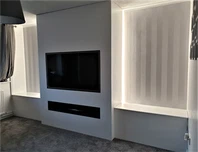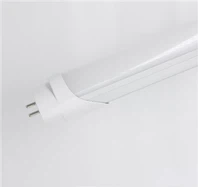When searching for a replacement bulb, you might have seen the word "E26," but you might not know what it means. Find out by reading on!
Describe the E26 bulb.
The cap or base of a light bulb, which allows for both electrical and mechanical contact, is referred to as E26. The most common lamp base, the Edison Screw, is represented by the letter "E" in the symbol "E26," while its diameter, measured in millimetres, is represented by the number "26." (approximately 1 inch).
Another name for E26 is a medium Edison screw (MES).
Hence, an E26 bulb is any bulb or light that mounts and makes electrical contact with the E26 cap or base.

When identifying an E26 bulb, it is best to look at the bottom, or side that does not emit light. You most certainly have an E26 bulb if you observe a metallic base with 1 inch-diameter screw holes. To make sure they can be used safely with the suitable lampholders, manufacturers typically stamp "E26" alongside the bulb's wattage and brightness on them. This is another approach to be sure.
The most popular lamp bases in North America, Japan, and other nations that often utilise 120V AC are those for E26 bulbs. For Europe and 240V AC, see E27 bulbs. The E26 lamp base has remained popular despite historically being most frequently used with incandescent lights, along with fluorescent CFL bulbs and LED lamps.
Nowadays, E26 bases are often used with A19 LED lights, BR LED lamps, and PAR LED lamps.
E26 does not refer to the design of the lightbulb!
Its base, or point of contact with the lampholder, is the sole part that bears the E26 identification. Although having various forms and sizes, a broad variety of bulbs and lights may use an E26 base. The LED downlight shown below utilises an E26 "plug" to connect to the electrical system.
How is an E26 bulb operated?
Like other Edison Screw base types, E26 bulbs function the same. Turn the lamp clockwise until it is completely secured after the screw has been placed so that it faces the socket on the fixture.
The right-handed E26 screw threads serve as the neutral electrical channel in addition to providing mechanical support (assuming the fixture is wired properly).
The bottom of the screw also has a metal contact point with a diameter of around 10 mm. The "hot" or "live" electrical input is represented by this contact point.
Electrical wires are welded or soldered onto the screw threads and bottom contact point on the interior of the bulb. These wires then connect to the internal circuitry of CFL and LED E26 bulbs, or the filament in an incandescent bulb.
What benefits does E26 offer?
Although E26 bulbs are among the most used lamp types, it is usually simple to locate the proper lampholder or fixture. Moreover, installation is frequently quite simple and involves no assembly or equipment.
Edison The strength and stiffness of the screw threads make screw bases some of the safest ways to attach a bulb. They are thus very well suited for environments that could experience tremors. Also, a snug fit in the screw base makes it impossible for moisture and other debris to access the contact points, lowering the possibility of electrical failures.




